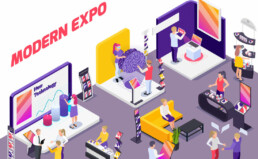How to define your event format and maximise its effectiveness
Source : Association Meetings International
Author: Kazuto Yoshii

“Online is not a simple replacement for the real thing,” says JTB Communication Design’s (JCD) Kazuto Yoshii. ” Think about the added value of a new event fusing both.”
Yoshii from the Meeting & Convention Division at Japan-based JCD, a full-service corporate event agency told M&IT that the demand for online events in addition to live events has increased sharply. Yoshii shares with M&IT the kind of events the agency is striving to create and how it intends to achieve it, given the difficulty of holding large-scale, on-site events during the current Covid-19 climate.
Currently, many physical events have been cancelled due to the influence of Covid-19, and the demand for online events is increasing. Fortunately, JCD has been involved in online events for a long time. It is common practice to distribute video recordings to people who cannot participate in lectures and other events. In addition, live video distribution is done in real-time for events like award ceremonies where the newest information is important.
Nowadays, it is not uncommon for not only the audience, but the performers to be online as well. Companies are also making more complex demands, such as inviting presenters from overseas to hold discussions in real-time and then inserting audio from the interpreters.
In addition, it is important to take the ways in which people participate in online events into account, meaning the freedom of place and space while using devices such as PCs and smartphones. As work styles are diversifying, using a smartphone while on the move as if reading a book, has become another way to participate in events.
Online events can be broadly divided into four formats
The first one, ‘on-demand distribution event‘, means editing a lecture or seminar that was held, and distributing the video and audio at a later date. Since it can be viewed at any time for a certain period, it has the advantage that busy people can watch it repeatedly at the time and place most convenient for them, and it can also reach more people.
The second is ‘live distribution event‘. This means distributing the video at the same time as the actual event, such as an entrance ceremony or the presentation of a new product. The unedited video is delivered in real-time, making it possible for people in remote locations who have difficulty physically attending to share the moment and atmosphere with those in the venue.
The third type is the ‘virtual event‘, in which a virtual space is built for events such as exhibitions and trade fairs, where exhibits and company booths can be set up online. By accessing this virtual space you can see the exhibit as if you had participated in the event. You can experience the event regardless of the venue or location, but the disadvantage is that it takes time and money to build the system. Also, at the current business level, it may be difficult to hold large-scale business negotiations and conclude contracts in a virtual space.
Lastly, the fourth, ‘hybrid event‘. This style of event uses live distribution and virtual rooms that are available online, in addition to a physical event. Multiplying real-world events and online solutions will make offline and online feel the same. In addition, it is possible to maximize the effect of marketing measures, such as being able to grasp the behaviour history of participants online.






